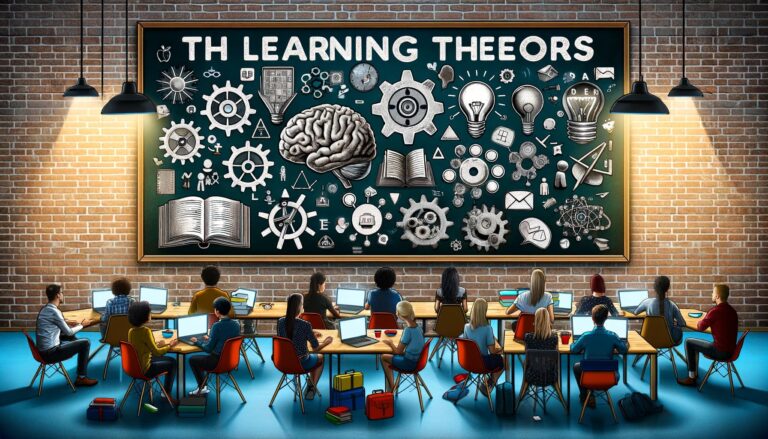AI and Language Learning
Three British Council Presentations about AI and TESOL
Co-designing language learning: students, teachers and AI
AI-Generated Summary Podcast
One-Sentence Takeaway
- Co-designing learning with students fosters engagement, critical thinking, and an understanding of AI’s role in education.
Summary
- Josh Underwood discusses co-designing learning with students, emphasizing human intelligence, AI’s role, and participatory techniques in education.
Ideas
- Co-designing learning promotes student engagement and ownership in their education.
- Understanding human intelligence is crucial in distinguishing from AI capabilities.
- Conversations about learning should prioritize the values and beliefs of students and teachers.
- AI’s advantages include speed and efficiency, but it can lack human connection.
- Participatory design techniques can help teachers and learners collaboratively shape their educational experience.
- Educators should encourage critical discussions on AI’s risks and opportunities in learning contexts.
- Scaffolding learning involves providing just enough support to foster independence and confidence.
- Incorporating stories and scenarios can make abstract concepts more relatable and actionable.
- Co-designing activities can lead to creative solutions that might not be visible to educators alone.
- Engaging students in discussions about technology fosters a deeper understanding of its implications.
- AI’s data-driven nature may overlook the nuanced human experiences essential for effective learning.
- The importance of empathy in teaching contrasts with AI’s lack of emotional intelligence.
- Transparency in using AI tools is essential for building trust with students and parents.
- Continuous reflection on the impact of AI on learning is necessary for ethical education.
- Teachers should explore how AI can complement rather than replace human interaction.
- Co-designing assessments can lead to more meaningful and relevant learning outcomes.
- AI can facilitate brainstorming and idea generation but lacks human creativity and experience.
- Engaging parents and communities in co-design discussions can alleviate resistance to AI in education.
- Educators must balance efficiency with the depth of learning experiences for students.
- Understanding diverse perspectives can enrich the educational process and outcomes.
- Fostering a culture of collaboration and open dialogue enhances the learning environment.
Insights
- Human intelligence is characterized by emotional depth, creativity, and lived experiences that AI lacks.
- Co-designing learning experiences with students can lead to more effective and meaningful education.
- The integration of AI in education should prioritize ethical considerations and transparency.
- Engaging students in discussions about AI fosters critical thinking and awareness of technology’s implications.
- Effective teaching requires balancing the advantages of AI with the need for human connection and empathy.
- Scaffolding learning is essential to develop student independence while acknowledging their unique needs.
- Collaborative approaches to learning design can yield innovative solutions that benefit all stakeholders.
- The role of AI in education should complement, not replace, the human aspects of teaching and learning.
- Continuous reflection and adaptation are necessary as AI technologies evolve in educational contexts.
- Engaging parents and communities in co-design discussions can foster acceptance and understanding of AI.
Quotes
- “What does it mean to be human?”
- “Being human is your AI advantage.”
- “AI can help us to do stuff that we find difficult.”
- “The future is here. The hybrid AI human teacher is the perfect blend of machine and human teacher.”
- “Students love them and they’re never bored in class.”
- “If education is all about those perfect scores, about getting the right grade, that is also a good thing.”
- “We need to create an environment in which people feel free to participate.”
- “There is a tension between speed and efficiency and connecting with students on a human level.”
- “We can use stories like this to engage people’s imaginations.”
- “What are the most important things for language teachers to do?”
- “Why do anything for yourself if AI can do it for you?”
- “AI has loads of training data, which is much broader and has much wider experience than I have.”
- “It’s important to talk about our pedagogical intentions.”
- “This is a literacy issue.”
- “The students are becoming afraid of their teachers.”
- “We need to think carefully about what is important.”
- “What risks are there when using AI?”
- “What other issues should we be considering?”
- “The importance of empathy in teaching contrasts with AI’s lack of emotional intelligence.”
- “Engaging students in discussions about technology fosters a deeper understanding.”
- “We need to ask our students about their beliefs on effective learning.”
Habits
- Engage students in co-designing their learning experiences.
- Foster a culture of open dialogue and collaboration in the classroom.
- Prioritize emotional intelligence and empathy in teaching practices.
- Encourage critical thinking discussions regarding technology’s role in education.
- Reflect on personal teaching practices and adapt based on student feedback.
- Use stories and scenarios to illustrate complex concepts in relatable ways.
- Incorporate diverse perspectives in learning design to enrich educational experiences.
- Facilitate participatory design techniques to enhance student ownership of learning.
- Create safe and inclusive environments for students to share their ideas.
- Balance the use of technology with the need for human interaction in learning.
Facts
- AI requires parental consent for users aged 13 to 18.
- The hybrid AI human teacher can deliver classes with speed and efficiency.
- AI can help facilitate conversations about learning and technology.
- Students may use AI more during times of academic pressure.
- AI’s advantages include efficiency, but it can lack emotional depth.
- Participatory design techniques can lead to greater student engagement in learning.
- Many students view AI positively, but their attitudes may shift based on experiences.
- The UNESCO framework for AI in education was recently released.
- Co-designing assessments can result in more relevant learning outcomes.
- Stories can engage students’ imaginations and illustrate potential learning scenarios.
References
- Handbook of design in educational technology (co-edited by Josh Underwood).
- Research publications on learning technology co-authored by Josh Underwood.
- Articles on participatory design and co-design in education.
- Reports on student perspectives on AI usage in learning contexts.
- Teaching English website with lesson plans on AI in education.
- Books on redesigning learning contexts by Professor Rose Luckin.
- Nick Peachey’s article on generative AI in the language classroom.
- AI competency frameworks from UNESCO and other organizations.
- Professor Mike Sharples’ work on story writing and AI tools.
- Articles discussing the ethical implications of AI in education.
Recommendations
- Implement co-design practices to involve students in their learning journey.
- Facilitate open discussions on the implications of AI in educational contexts.
- Use storytelling as a tool to illustrate complex concepts and engage students.
- Balance efficiency and human connection in teaching practices with AI integration.
- Encourage students to explore their beliefs about effective learning and technology.
- Create participatory environments that foster collaboration and ownership of learning.
- Develop assessments that prioritize the learning process over the final product.
- Promote transparency in using AI tools to build trust with students and parents.
- Reflect on the ethical considerations of AI’s role in education continuously.
- Engage parents and communities in co-design discussions to alleviate resistance to AI in education.





